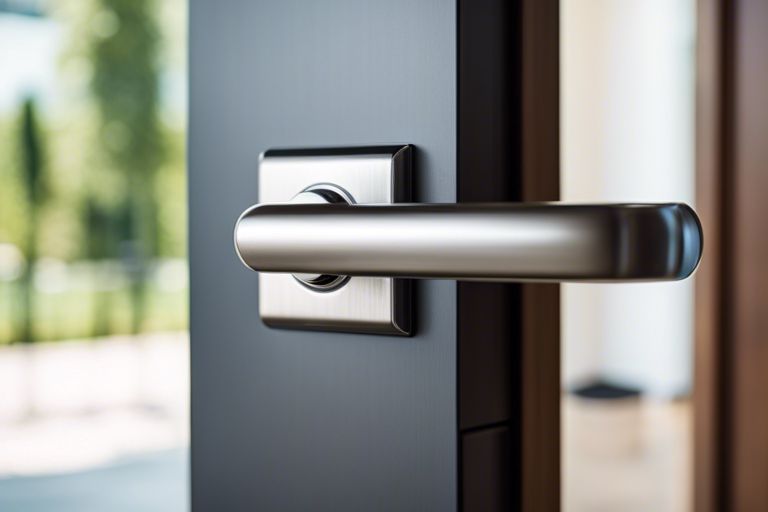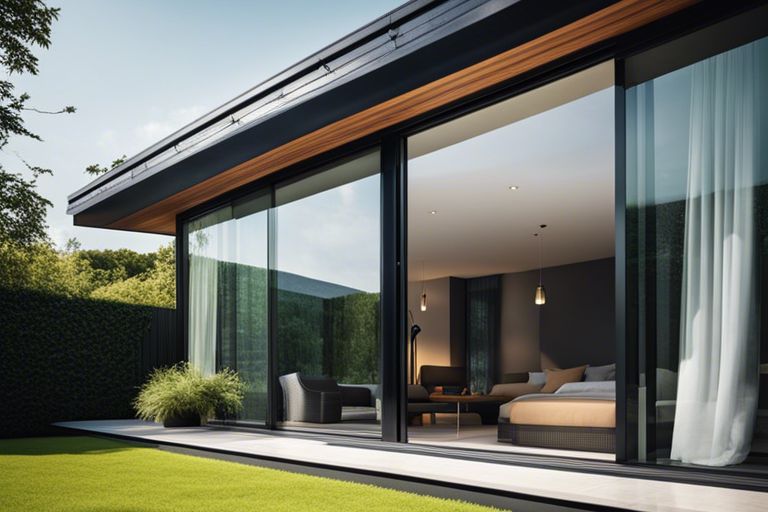Discover the cutting-edge advancements in flat rooflight technology that are revolutionising the way natural light enters our buildings. From energy-efficient designs that reduce utility costs to impact-resistant materials that enhance safety, the latest innovations in flat rooflights are setting new standards in the construction industry. These modern rooflights are not only sleek in design but also provide optimal thermal performance and UV protection for indoor spaces, creating a more sustainable and comfortable environment. Stay updated on the most up-to-date trends in rooflight technology to enhance the aesthetics and functionality of your living or working space.
Key Takeaways:
- Increased energy efficiency: Flat rooflights now come with advanced glazing options that offer improved thermal performance, helping to reduce heat loss and energy consumption.
- Enhanced design and aesthetics: Innovations in flat rooflight technology have led to sleeker, more minimalist designs with slimmer frames and larger glass areas, providing a modern and stylish addition to any property.
- Smart features and automation: Some flat rooflights are now equipped with smart technology such as remote control operation, rain sensors, and integrated blinds, allowing for greater convenience and control over light and ventilation in the space.

Design Advancements in Flat Rooflights
Frameless Designs and Aesthetics
One of the most notable design advancements in flat rooflights is the shift towards frameless designs, which offer a sleek and modern aesthetic that is popular among homeowners and designers alike. Frameless rooflights provide an unobstructed view of the sky above, allowing for maximum natural light to enter the space below. The minimalist design of frameless rooflights can enhance the overall look of a property, creating a seamless connection between the indoor and outdoor spaces.
Moreover, frameless rooflights are often made with slim sightlines that help maximise the amount of glazing and minimise the visual impact of the frame. This design feature not only improves the aesthetics of the rooflight but also ensures that the focus remains on the stunning views outside. The combination of frameless design and slim sightlines has become increasingly popular in modern architecture, showcasing a blend of functionality and style.
Innovative Materials and Durability
Another significant advancement in flat rooflight technology is the use of innovative materials that enhance the durability and performance of these products. Manufacturers are now incorporating materials such as aluminium, toughened glass, and uPVC to ensure that rooflights are not only aesthetically pleasing but also robust and long-lasting. These materials offer excellent weather resistance, UV protection, and thermal efficiency, making them ideal for use in various climates.
Furthermore, the use of high-quality materials in flat rooflights contributes to their longevity and low maintenance requirements. Homeowners can enjoy peace of mind knowing that their rooflights are built to withstand the elements and maintain their appearance over time. By investing in rooflights made from innovative materials, property owners can benefit from both enhanced aesthetics and improved performance.
For more information on the latest innovations in flat rooflight technology, stay tuned for our upcoming blog posts where we will examine deeper into the design advancements and material innovations shaping the future of rooflights.
Energy Efficiency and Sustainability
Flat rooflights have evolved significantly in recent years, particularly in terms of energy efficiency and sustainability. These innovations have made them an environmentally friendly choice for both residential and commercial properties.
Glazing Technology and Thermal Performance
Advancements in flat rooflight glazing technology have greatly improved their thermal performance. Triple-glazed units with low-emissivity coatings and argon gas fillings are now common, providing excellent insulation properties to prevent heat loss and reduce energy consumption.
Furthermore, the design of the frames and seals has been enhanced to minimise air leakage, improving overall energy efficiency and reducing the carbon footprint of buildings.
Environmental Considerations in Manufacturing
Manufacturers are increasingly adopting sustainable practices in the production of flat rooflights. This includes using recycled materials, implementing energy-efficient processes, and reducing waste generation. These environmental considerations not only benefit the planet but also contribute to creating a more sustainable built environment for future generations.
Additionally, some manufacturers are investing in carbon offsetting initiatives to counteract any environmental impact caused during the manufacturing process, further demonstrating their commitment to sustainability.

Smart Technology Integration
Automated Opening and Climate Control
Innovations in flat rooflight technology now include automated opening and climate control features. This advancement allows users to adjust the rooflight settings remotely, ensuring optimal ventilation and temperature control within the space below. With sensors monitoring temperature and air quality, the rooflight can intelligently regulate airflow to create a comfortable environment.
The integration of automated opening and climate control in flat rooflights not only enhances convenience but also contributes to energy efficiency. By allowing natural light and fresh air to circulate efficiently, these smart rooflights can help reduce reliance on artificial lighting and air conditioning, ultimately lowering energy consumption and costs.
Integration with Smart Home Systems
Flat rooflights with integration with smart home systems offer seamless connectivity with various devices and platforms, enabling users to manage their rooflights alongside other smart technologies. This feature allows for centralised control of lighting, heating, and other elements in the home, promoting a cohesive and efficient smart living environment.
Moreover, the integration with smart home systems enhances security by providing the ability to schedule lighting patterns and remotely adjust settings, giving the impression of occupancy even when the property is vacant. This level of automation and customisation offers both convenience and peace of mind for homeowners.
For further flexibility and customisation, some flat rooflights can be integrated with voice assistants like Amazon Alexa or Google Assistant. This compatibility allows users to control their rooflights through voice commands, adding an extra layer of convenience to their smart home experience.
Installation and Maintenance
When it comes to flat rooflight technology, the installation process plays a crucial role in ensuring optimal performance and longevity. Additionally, regular maintenance is essential to preserve the functionality and efficiency of flat rooflights over time. In this chapter, we will explore the latest innovations in installation methods and maintenance solutions that are revolutionising the industry.
Advancements in Easy-Install Systems
The latest flat rooflight technology has seen significant advancements in easy-install systems, making the installation process quicker and more straightforward than ever before. These systems often feature pre-assembled components that can be easily manoeuvred into place, reducing installation time and labour costs. Additionally, integrated weatherproofing mechanisms ensure a watertight seal, enhancing the overall performance of the rooflight.
Furthermore, some easy-install systems now come with remote control capabilities, allowing users to adjust settings such as ventilation and lighting with ease. This not only enhances user convenience but also reduces the need for manual adjustments, contributing to the longevity of the rooflight.
Long-Term Maintenance Solutions
When it comes to long-term maintenance of flat rooflights, innovative solutions have been developed to simplify upkeep and increase durability. These solutions often include self-cleaning glass coatings that reduce the build-up of dirt and debris, minimising the need for frequent cleaning. Additionally, anti-corrosion materials are being incorporated into the design to prevent rust and deterioration over time.
One of the key benefits of these long-term maintenance solutions is the reduction in maintenance costs over the lifespan of the flat rooflight. By minimising the effort required for upkeep and enhancing the durability of the materials used, property owners can enjoy long-lasting performance with minimal intervention.

The Latest Innovations in Flat Rooflight Technology
Flat rooflights have witnessed significant technological advancements, with features like energy-efficient glazing, remote-controlled operation, and sleek design profiles. These innovations enhance both the functionality and aesthetics of buildings, allowing for better natural light exposure and increased energy savings. With improved thermal performance and innovative materials, modern flat rooflights offer superior insulation and durability, making them an ideal choice for contemporary architectural designs. Embracing these latest trends in flat rooflight technology can elevate the overall appeal and performance of any property.
FAQ
Q: What are the key benefits of the latest innovations in flat rooflight technology?
A: The latest innovations in flat rooflight technology offer improved energy efficiency, increased natural light, better thermal performance, and enhanced aesthetics for modern buildings.
Q: How do the latest innovations in flat rooflight technology enhance energy efficiency?
A: The latest flat rooflight technology incorporates advanced glazing materials and insulation to reduce heat loss, minimise solar heat gain, and improve overall energy performance, contributing to lower energy bills and a more sustainable building design.
Q: What design features are available in the latest flat rooflight technology to meet different architectural requirements?
A: The latest flat rooflight technology offers a range of design options including frameless finishes, customisable sizes, remote-controlled operation, integrated rain sensors, and various glazing types such as self-cleaning and solar-reflective coatings, allowing architects and designers to tailor rooflight solutions to suit specific project needs and aesthetics.






